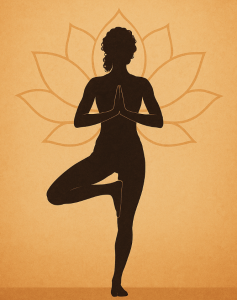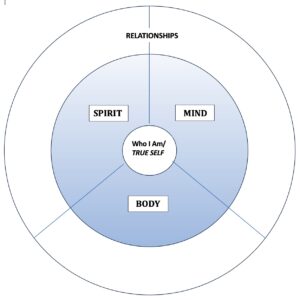Poet, Czeslaw Milosz, queried What good is poetry if it cannot save nations or people? I would add, or planet, and pose the same question with regard to yoga. What good is yoga if it cannot save nations or people or planet?
In other words, what good is the practice of yoga in enabling us to live a better life? Fortunately, I could provide several answers to this question, but this answer has real significance if you are seeking greater self-reliance — each moment of our practice provides us with a response in the here and now. For those of you who already practice yoga, you are very aware of each posture’s ability to stir up sensations felt somewhere in your body or mind. Those felt responses, emerging from within, alert us to what we can explore and maintain or choose to alter within ourselves.
These directly felt experiences also allow us to test out the teachings of yoga and witness the personal impact. This gained self-reliance lessens our dependence on the word of someone else, such as a teacher, preacher, philosopher, parent, politician, doctor or friend. I am not saying good role models are unnecessary but rather that our growth cycle from dependent to independent to interdependent is strengthened. Our ability to discover and discern meaningful and right thoughts, words and deeds is heightened. And in this heightened discernment, we enrich our lives and the lives of those who cross our path.
Another desirable outcome … our present moment felt experience in each yoga posture reveals to us who we are — physically, energetically, mentally-emotionally, intuitively and spiritually. And as we learn and grow, we discover that what prevails within is also reflected outside of our being. … the essence of the body is discovered to be nothing other than the great rivers of the earth [water], the vast sky [space], and the winds of the breath [air] (Michael Stone, The Inner Tradition of Yoga).
Notice what you are feeling (mentally, emotionally and physically) in each of the poses in the following yoga sequence. You will note that as the degree of difficulty increases so does the degree of sensation (information). Therefore, only move into each posture to the depth of your edge, which is your first sense of discomfort. Nothing of good health is accomplished by moving beyond your edge into pain.
Begin your yoga practice quietly in a seated posture (Virasana, Sukhasana or Siddhasana) in order to withdraw your physical senses (sight, sound, smell, taste, touch) from the outer world into your inner experience (Pratyahara). Initially focus on your breath (both the inhales and exhales) to settle your body and mind, and then shift your awareness to practicing the Yoga Actions below. Take your practice of these actions into each pose that follows.
YOGA ACTIONS:
1. From the webs of the index fingers and thumbs, use your awareness to track (or draw an imaginary line) along the inner lower arms, inner elbows, inner upper arms into the inner edges of the shoulder blades and down along the outer edges of the sacrum.
2. From the outer edges of the baby fingers, use your awareness to track (or draw an imaginary line) along the outer lower arms, outer elbows, outer upper arms into the outer edges of the shoulder blades and down along the outer edges of the sacrum.
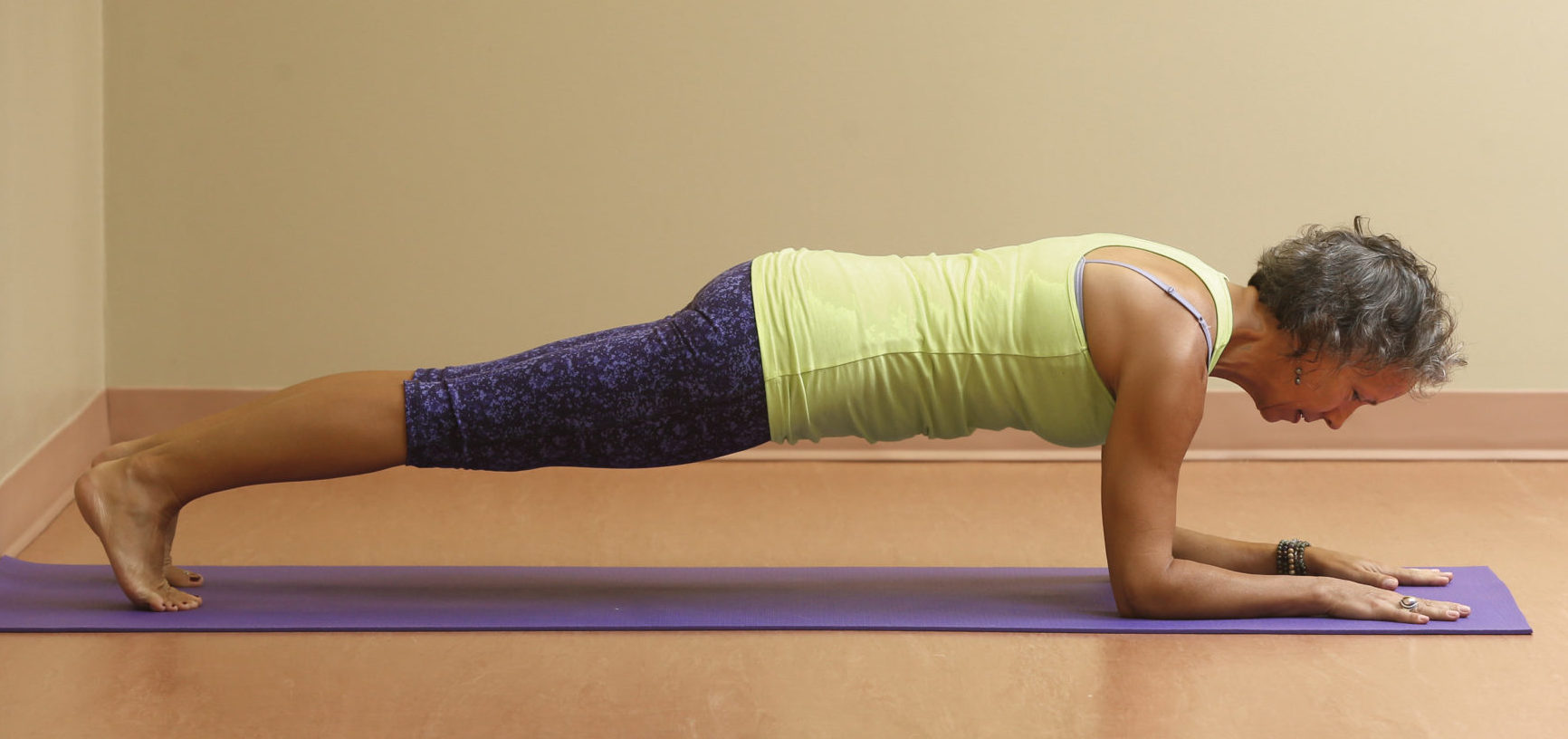
PINCHA PLANK 5 Breath each
– press into forearms and broaden the space between inner shoulder blades
– extend down inner legs into big toe mounds and inner heels
to EKA PADA PINCHA PLANK
– lift one foot so ankle is level with hip, hold, then repeat with other foot lifted
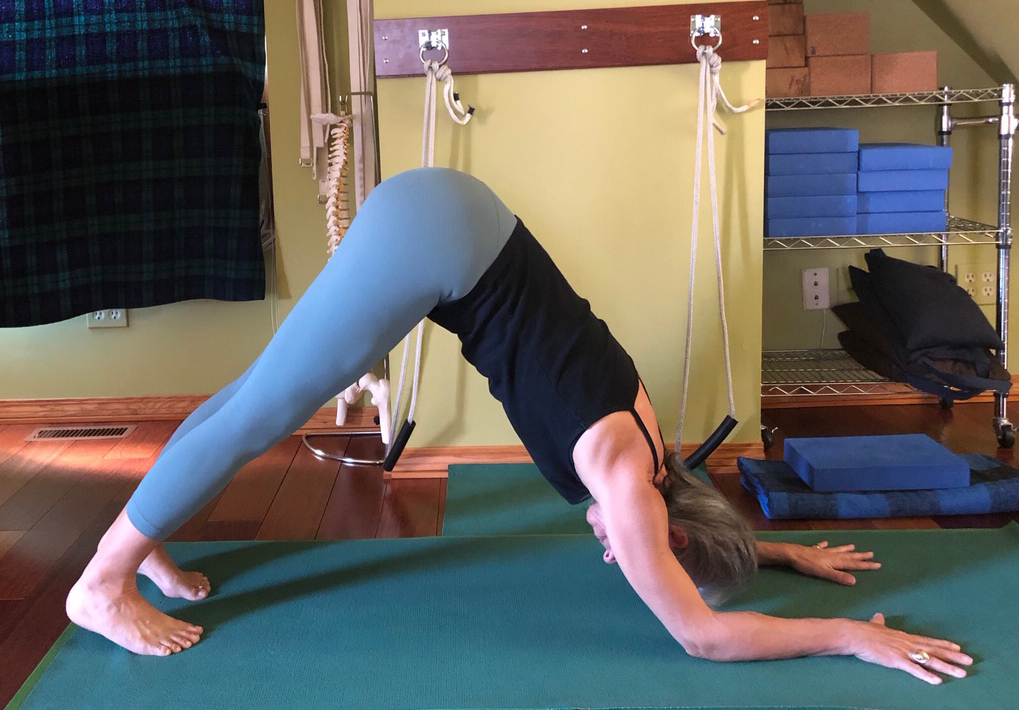
PINCHA DOG
– upper arms belted
– press into forearms and hands to lift torso & legs off shoulders
– lift inner legs into big toe mounds & inner heels
– release to BALASANA (Child Pose)
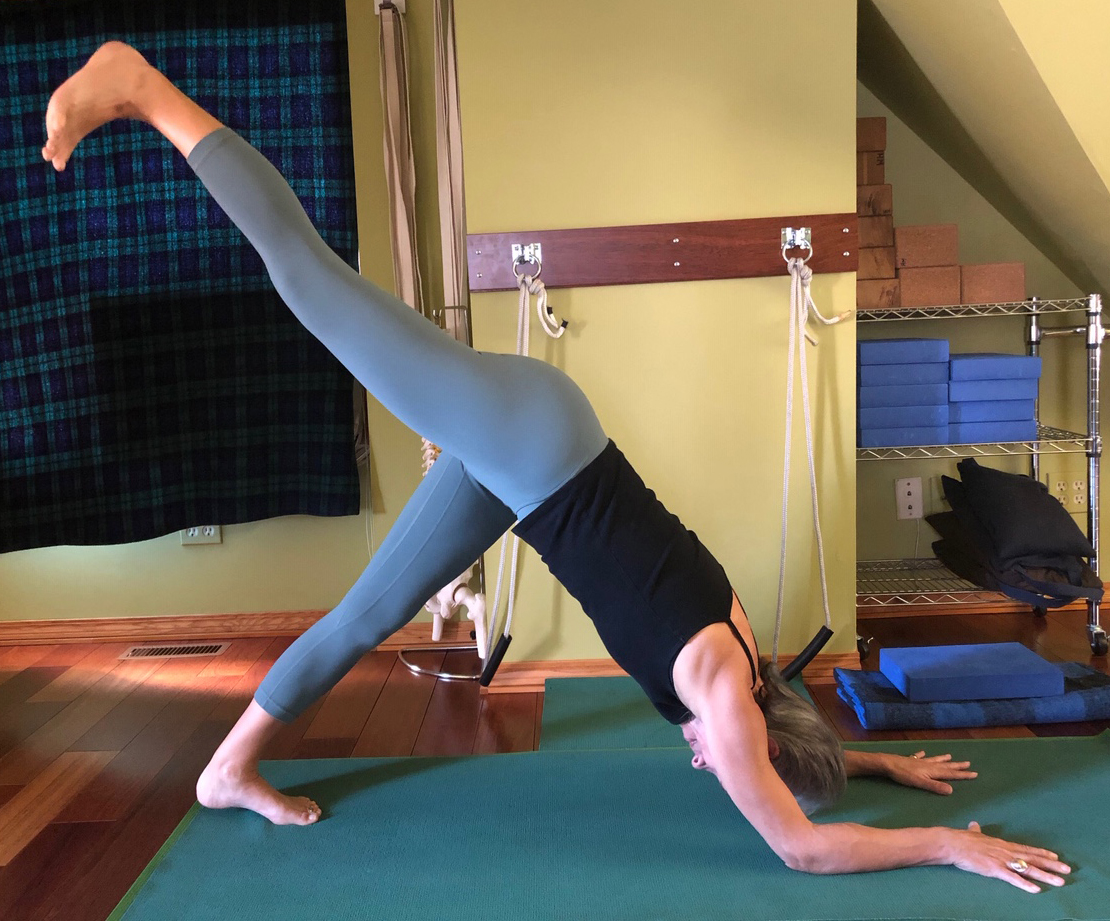
EKA PADA PINCHA DOG
– upper arms belted
– release to BALASANA (Child Pose)
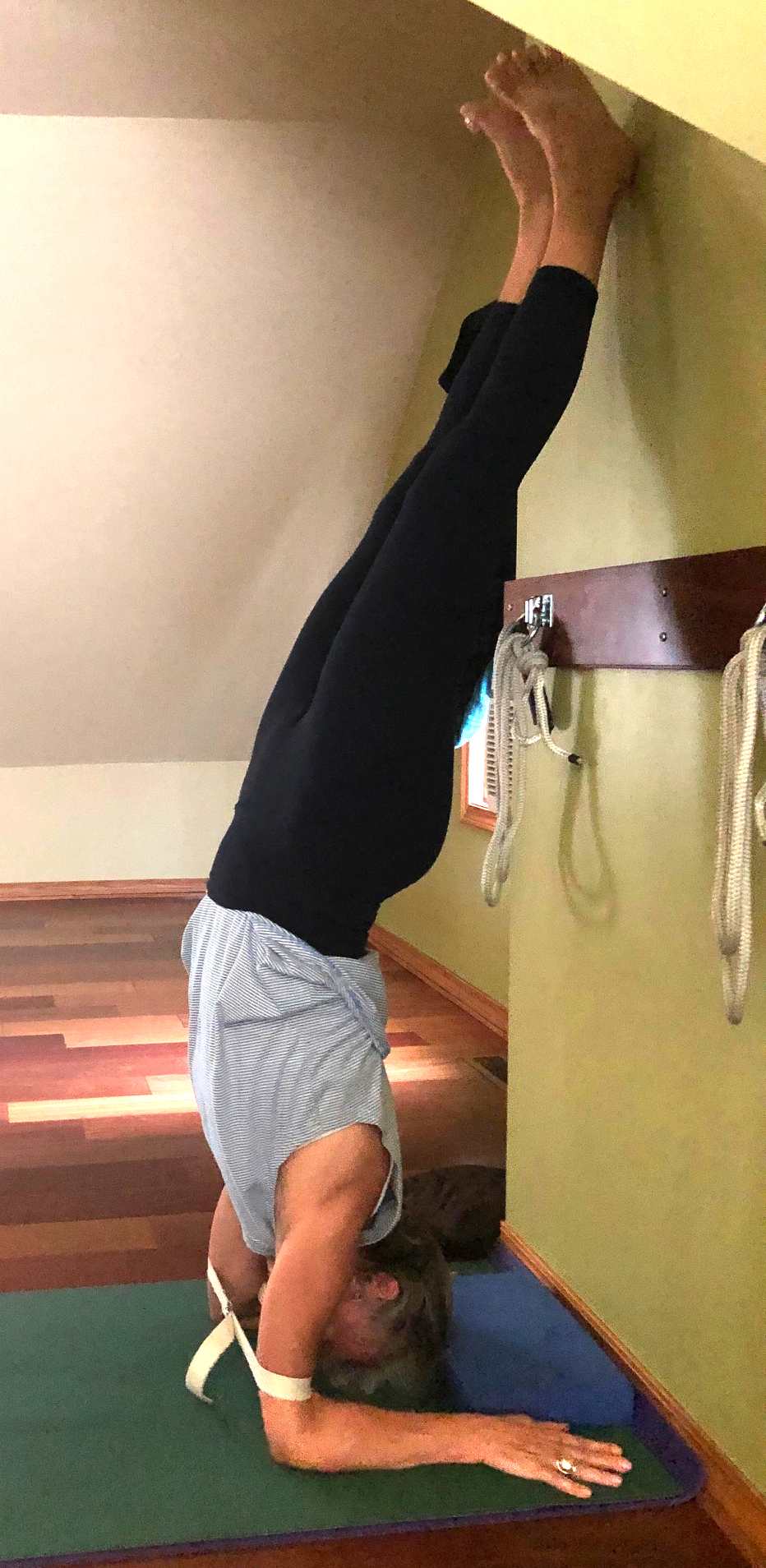
SALAMBA PINCHA MAYURASANA
– upper arms belted; block into wall and between hands
– single-leg kick-up into wall; heels stay at wall
– release to BALASANA (Child Pose)
If you can move your legs and torso up the wall without adding weight to your shoulders, move to this next pose to bring your hips over your shoulders.

SALAMBA BENT-KNEE PINCHA MAYURASANA
– bend both knees until shins are parallel to ceiling and hips over shoulders
– press feet into the wall; maintain Tadasana rotation of inner thighs
– release to BALASANA (Child Pose)
If you can move your hips over your shoulders without collapsing toward the floor, move to this next pose.
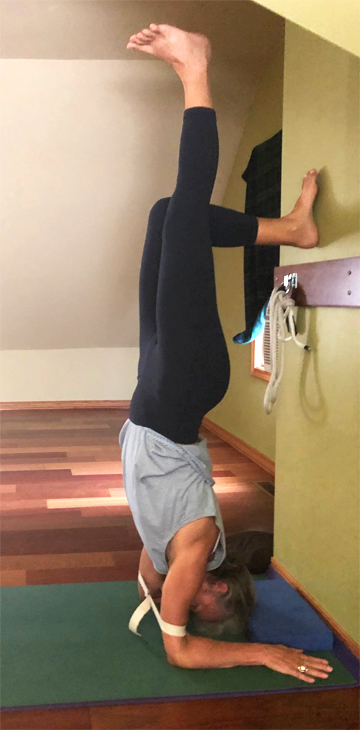
EKA PADA SALAMBA PINCHA MAYURASANA
– when both shins are parallel to the ceiling, raise & straighten one leg
– flex foot of extended leg
– release to BALASANA (Child Pose)
– repeat on other leg
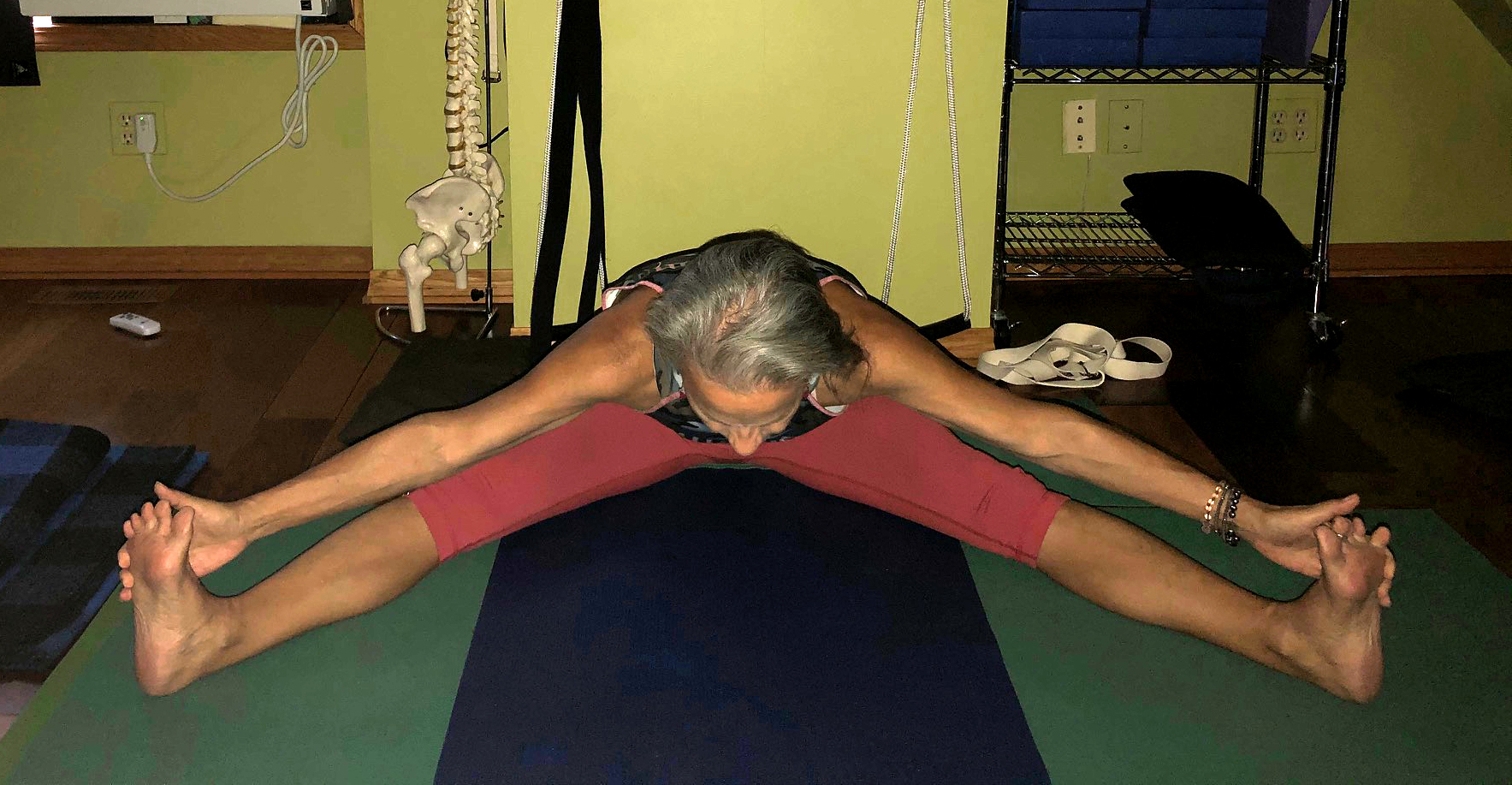
UPAVISTHA KONASANA (Wide-leg Forward Fold) 20 Bs
– hands reach to baby toe side of feet
– thigh bones & back of knees release to floor
– rest forehead on a block
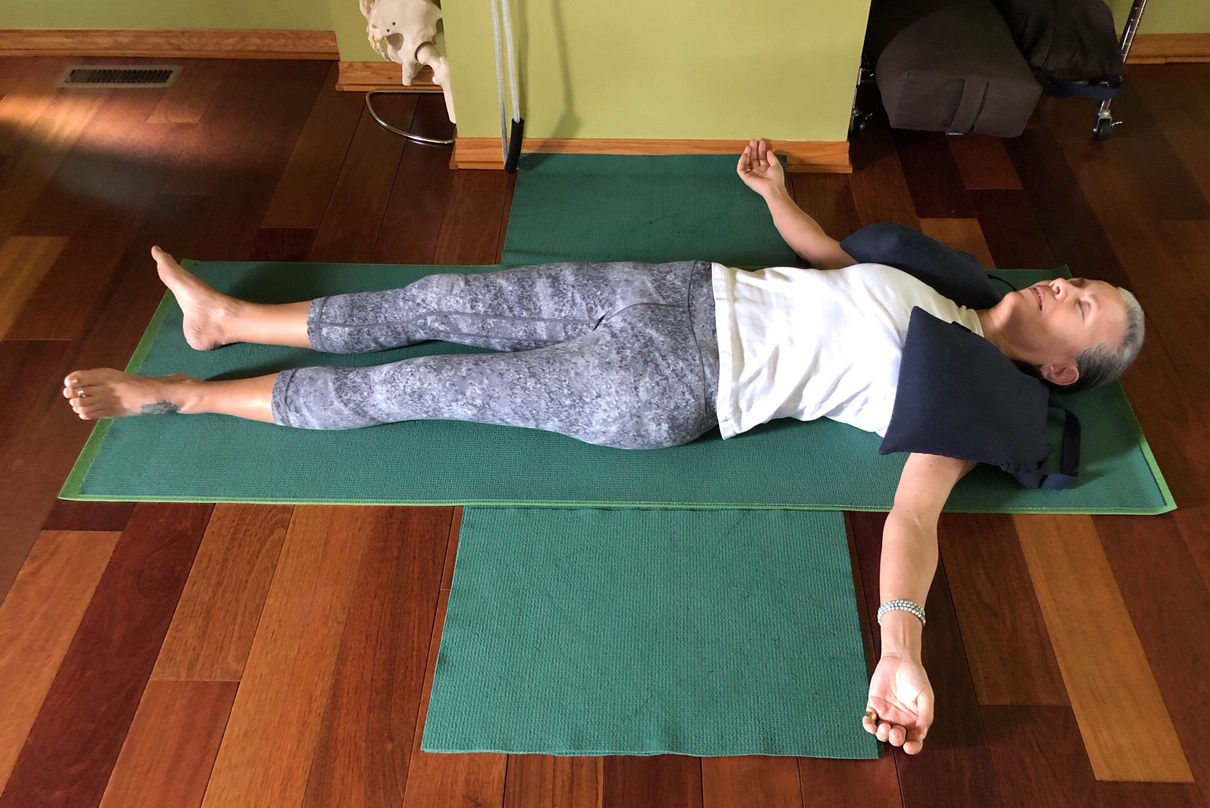
SAVASANA (Corpse Pose) 5-10 minutes
– sandbags or blocks on fronts of shoulders to anchor them to the ground
May your present moment inner sensations guide your learning, healing and growth. Namaste.



